As the site is updated, each listing includes the shipping cost. Some listings which I have not updated still give you calculated shipping costs based on weight and size of package. (In the sections I have updated) If you select several different listings, we will consolidate your order and charge you the actual cost of the entire package. The shipping over charge will be refunded to you, when your order is shipped.
OLIVE SHELLS, A SELECTION OF THE WORLD'S MOST POPULAR OLIVE SPECIES
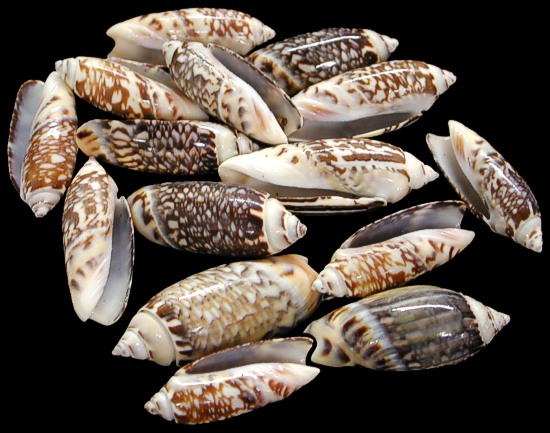
Gibbosa Olive Shells
Agaronia gibbosa, also known as the Olive Shell, is a species of sea snail and a marine gastropod mollusk belonging to the family Olividae.
The shell of this species measures 1.5 to 3 inches in length. The shell is heavy and gibbous, with a notably callous columella, particularly thickened at the upper part. The spire is also robustly thickened. The shell is primarily cream-colored, with the body whorl featuring zigzags and reticulations that range from ash-gray to orange and chocolate. The fasciole is yellowish and maculated with brown. The columella and the interior of the aperture are whitish.
Agaronia gibbosa varies in shape, yet larger specimens are often recognized among other Agaronia by their prominent spire callus and bulbous form, as opposed to the more common narrow and bullet-like shape. Naturally, Agaronia gibbosa shells are typically blotched green with a striped yellow band near the siphonal canal, although an all-yellow morph also exists. Frequently traded in the shell market, it's usual for the shell's outer layer to be polished off, exposing the underlying brownish-black color.
These species inhabit the Indian Ocean, commonly found along the coasts of the Indian subcontinent, Thailand, and Indonesia.
Scientific classification
Domain: Eukaryota
Kingdom: Animalia
Phylum: Mollusca
Class: Gastropoda
Subclass: Caenogastropoda
Order: Neogastropoda
Family: Olividae
Genus: Agaronia
Species: A. gibbosa
Binomial name: Agaronia gibbosa
A1-2-8
One quarter pound of Gibbosa Olive shells, ranging in size from 3/4 to 1 1/2 inches. ...... $1.15
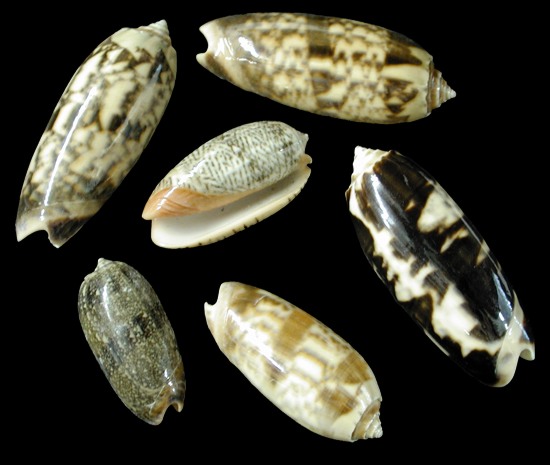
Golden with mixed Olives
Golden Olives are part of the gastropod family Olividae, sometimes referred to as the Lettered Olive. They possess a sturdy, elongated shell that varies in color from light to dark brown with zigzag lines, or even a golden yellow hue. Their habitat spans the tropical Western Atlantic, from the Gulf of Mexico coastline through the Caribbean, and down the eastern coast of South America to Argentina. Golden Olives thrive in shallow waters, burrowing in sand, and are carnivorous, preying on other mollusks during the night. This species is among the more than 350 that constitute the Olividae family and are commonly encountered.
L1-9
One quarter pound of Golden and mixed Olive shells are sold assorted, measuring 1/2 to 1 inch....... .79
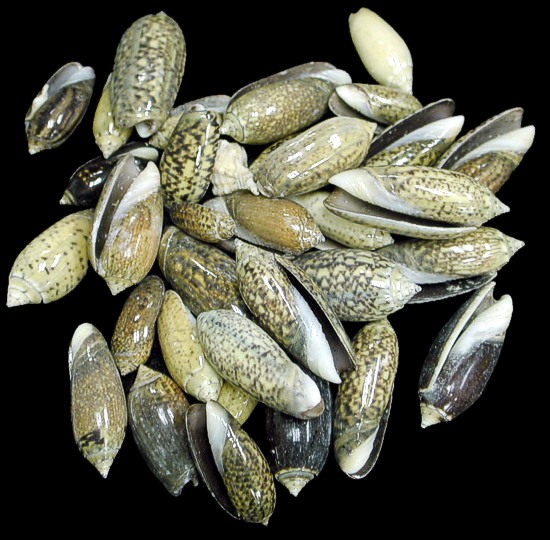
Baby Olives
The Baby Olive, belonging to the Olividae family and classified as a Gastropod, is sometimes referred to as the Swollen Olive. It possesses a robust shell that varies in color from light to dark brown, adorned with white spots and zigzag lines, or it may present a yellowish-green hue. These olives are native to the Tropical Indo-Pacific region, which spans from the Indian Ocean eastward to the northern coasts of Australia and New Zealand. They have a preference for shallow waters, where they burrow in the sand and exhibit carnivorous behavior, preying on other mollusks during the nighttime. This species is one of the more than 350 that constitute the Olividae family and are commonly encountered.
L4-9
One quarter pound of Baby Olive shells, ranging from 1/2 to 1 1/4 inches....... .79
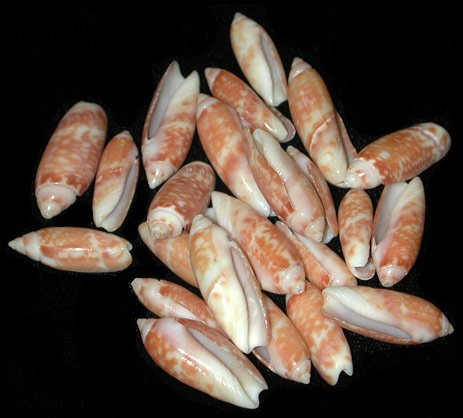
Tan Gibbosa Olive
The TAN Gibbosa Olive, a member of the Olividae family, is classified as a gastropoda gastropod, they are often referred to as the swollen olive. They features a heavy shell with a short spire and an ovate body whorl. The distribution of Gibbosa Olives spans from the Indian Ocean to the northern coasts of Australia and New Zealand, reaching just south of the Sea of Japan. They thrive in shallow waters, have carnivorous habits, and nocturnally prey on other mollusks. The TAN Gibbosa Olive is among the more than 350 species within the Olividae family and is commonly encountered.
L3-9
One Tan Gibbosa Olive shell 3/8 to 1 1/4 inch ...... OUT OF STOCK
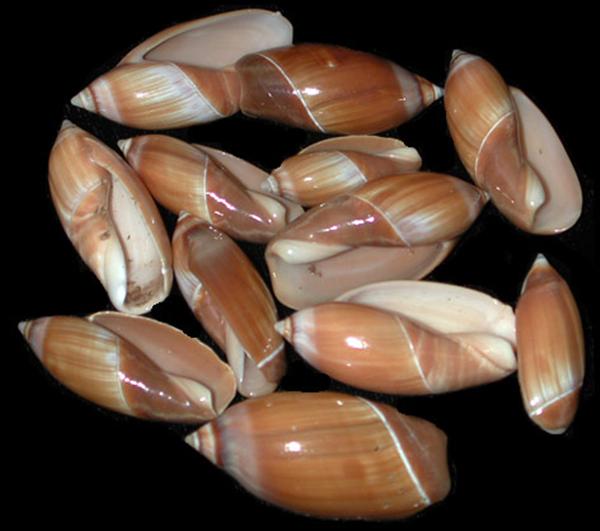
Red Olive Shell
Red Olives are part of the gastropod family Olividae, characterized by a solid shell with a pointed spire and an elongated body whorl. Their habitat extends from the Indian Ocean, across the northern shores of Australia and New Zealand, to just south of the Sea of Japan. Preferring shallow waters, these carnivorous creatures feed on other mollusks during the night. The Red Olives are just one of the more than 350 species within the Olividae family and are commonly encountered.
LL0-9
One Red Olive Shell, ranging in size from 5/8 to 1 1/2 inches....... .06